TERROR COMES TO CHINA: PART ONE
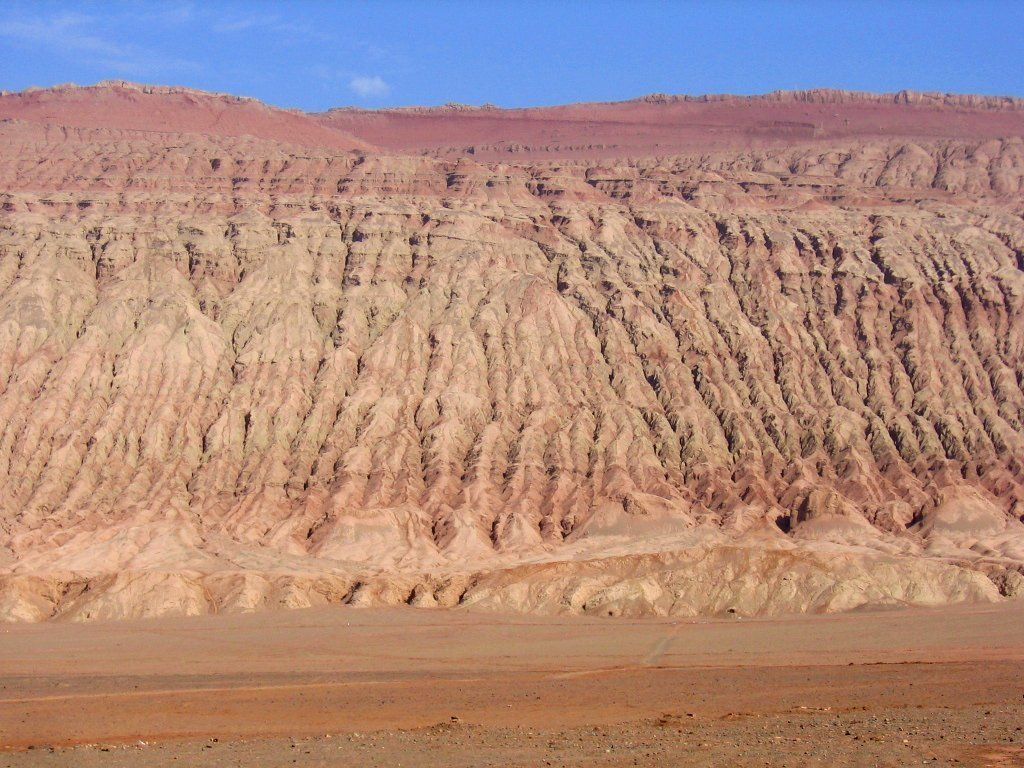 By Matthew BrownStaff WriterRobed horsemen navigate craggy mountain paths, laden with soviet era weapons and explosives. Their furtive eyes watch the sky for the bright glint of a surveillance drone. The fiery blast of a suicide bomber unites a national landmark and a remote desert village in a shared moment of tragedy. Heavily armed security forces patrol impoverished towns, glittering cities, and meandering highways on the hunt for an elusive foe. Masked operators break down the doors of a family home; the males inside are taken away, never to be seen again. From atop a clay brick minaret, a muezzin calls out the Adhan in a mournful voice that echoes across desert sands.You would be forgiven for reading this and imagining some conflict-scarred country in the Middle East. Images like those above have become familiar to Western audiences, long exposed to the sights and sounds of the United States’ wars in Iraq and Afghanistan. Yet this land of mujahideen, secret police, ethnic conflict, and ambiguous morality is actually China, specifically the administrative division called Xinjiang. It is here that the forces of radical Islam, ethnic identity, and nationalism collide head on with Chinese hegemony. China is entrenched in a campaign here that is known to the West as the Xinjiang Conflict, at least to those few who know of its existence. The Xinjiang Conflict has had a long, troubled history and in recent years the conflict has increased significantly. Unsurprisingly, little news of China's own shadow war makes it off of the mainland. In this two part series, I will introduce you to the conflict itself and the geopolitical interests which prolong it. To foster some sense of familiarity with the region, we will first cover the land, people, and prizes found in this restless territory, whose very name (Xinjiang: an old frontier which returns recently) acknowledges the tensions lying below the surface. Part two will then examine the secessionist forces operating in the territory, their motivations and sponsors, and conclude with China's response to an enduring struggle which has brought the war on terror to the very heart of Beijing.
By Matthew BrownStaff WriterRobed horsemen navigate craggy mountain paths, laden with soviet era weapons and explosives. Their furtive eyes watch the sky for the bright glint of a surveillance drone. The fiery blast of a suicide bomber unites a national landmark and a remote desert village in a shared moment of tragedy. Heavily armed security forces patrol impoverished towns, glittering cities, and meandering highways on the hunt for an elusive foe. Masked operators break down the doors of a family home; the males inside are taken away, never to be seen again. From atop a clay brick minaret, a muezzin calls out the Adhan in a mournful voice that echoes across desert sands.You would be forgiven for reading this and imagining some conflict-scarred country in the Middle East. Images like those above have become familiar to Western audiences, long exposed to the sights and sounds of the United States’ wars in Iraq and Afghanistan. Yet this land of mujahideen, secret police, ethnic conflict, and ambiguous morality is actually China, specifically the administrative division called Xinjiang. It is here that the forces of radical Islam, ethnic identity, and nationalism collide head on with Chinese hegemony. China is entrenched in a campaign here that is known to the West as the Xinjiang Conflict, at least to those few who know of its existence. The Xinjiang Conflict has had a long, troubled history and in recent years the conflict has increased significantly. Unsurprisingly, little news of China's own shadow war makes it off of the mainland. In this two part series, I will introduce you to the conflict itself and the geopolitical interests which prolong it. To foster some sense of familiarity with the region, we will first cover the land, people, and prizes found in this restless territory, whose very name (Xinjiang: an old frontier which returns recently) acknowledges the tensions lying below the surface. Part two will then examine the secessionist forces operating in the territory, their motivations and sponsors, and conclude with China's response to an enduring struggle which has brought the war on terror to the very heart of Beijing.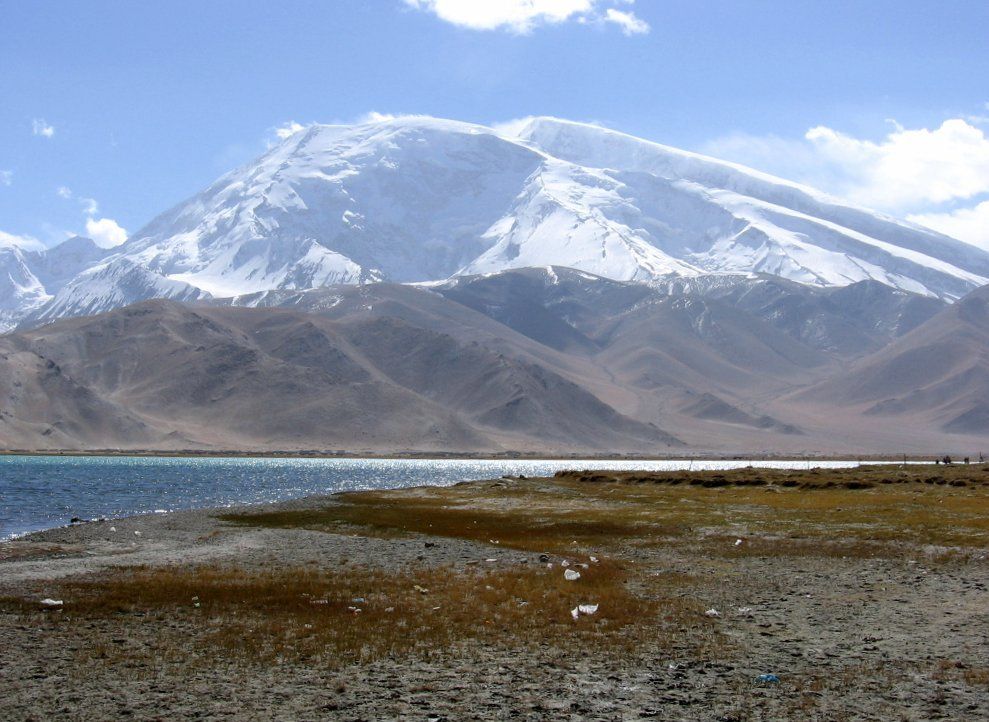 A Desert in the SkyFirst, let us sort out our geography. Xinjiang is the largest Chinese administrative division, the equivalent to a state or province. In an already immense country, Xinjiang dominates; the entire nation of Iran could fit into the territory with room to spare. Located in the most northwestern portion of China, you could imagine it taking the shape of two large bowls pushed together. Where the rims touch, the region is divided by the Tian Shan mountain range, an austerely beautiful locale typical of the territory as a whole. The depression of the northern bowl is called the Dzungarian Basin and the southern depression is the Tarim Basin. Rimming the northern bowl are the Altay and Tarbagatai mountains. The southern bowl’s rim consists of the Altun, Kunlun, and Karakoram mountains. Besides the impressive mountain ranges, the other major geographical feature is the Taklimakan Desert of the Tarim Basin. It was along the perimeters of this extensive desert that the Silk Road split into its two main western routes. Climatically, this elevated region is primarily semi-arid or desert. The harsh weather, terrain, and seasons have confined the population to narrow bands of foothills at the bases of mountain ranges or near desert oases.
A Desert in the SkyFirst, let us sort out our geography. Xinjiang is the largest Chinese administrative division, the equivalent to a state or province. In an already immense country, Xinjiang dominates; the entire nation of Iran could fit into the territory with room to spare. Located in the most northwestern portion of China, you could imagine it taking the shape of two large bowls pushed together. Where the rims touch, the region is divided by the Tian Shan mountain range, an austerely beautiful locale typical of the territory as a whole. The depression of the northern bowl is called the Dzungarian Basin and the southern depression is the Tarim Basin. Rimming the northern bowl are the Altay and Tarbagatai mountains. The southern bowl’s rim consists of the Altun, Kunlun, and Karakoram mountains. Besides the impressive mountain ranges, the other major geographical feature is the Taklimakan Desert of the Tarim Basin. It was along the perimeters of this extensive desert that the Silk Road split into its two main western routes. Climatically, this elevated region is primarily semi-arid or desert. The harsh weather, terrain, and seasons have confined the population to narrow bands of foothills at the bases of mountain ranges or near desert oases.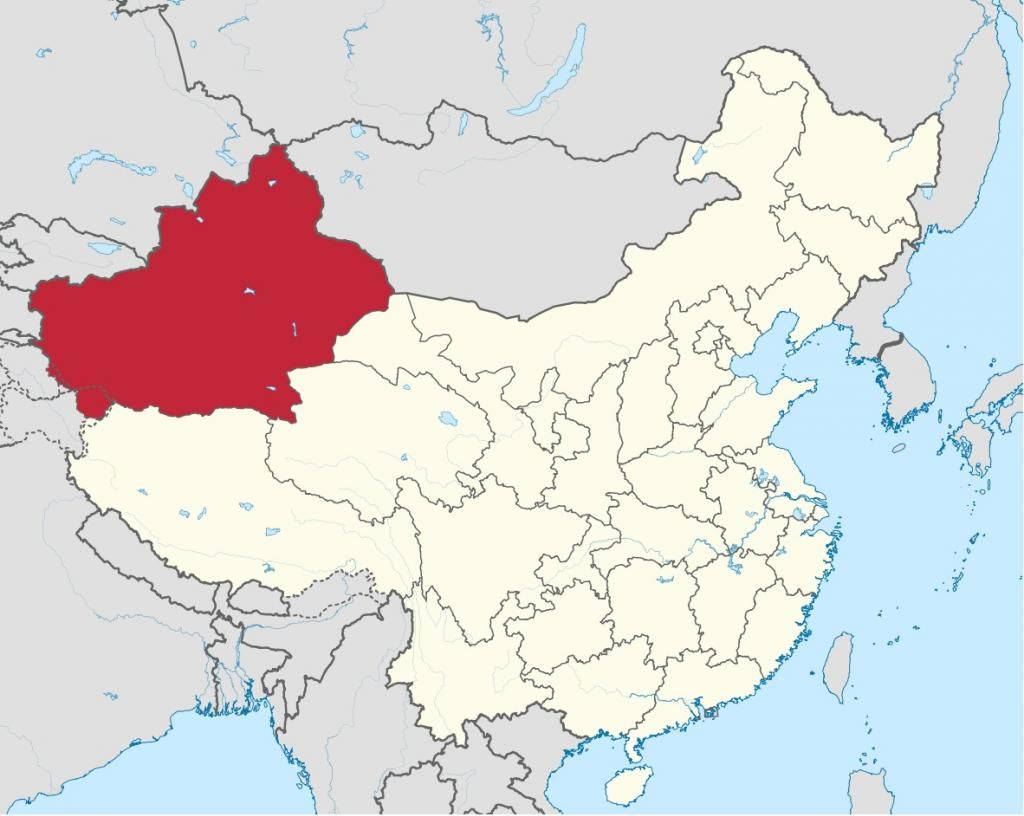 Xinjiang's size and its location at the very edge of the People’s Republic of China has created a long, winding border. The nations of Mongolia, Russia, Kazakhstan, Kyrgyzstan, Tajikistan, Afghanistan, Pakistan, India and the Chinese administrative division of Tibet all share a mountainous border with Xinjiang. Details of just where China ends and another country begins are somewhat vague. China and India both stake claims to the Chinese held Aksai Chin region, while Pakistan, India, and China each claim the Chinese held Shaksgam Valley. Much like the Kashmir question between Pakistan and India, these border disputes are frozen conflicts where little progress towards reconciliation has been made. These locations often contain important mountain passes critical for future transit projects. For obvious reasons, control of these key land routes in and out of China are of central importance to all parties involved.Native SonsAs noted before, the scarcity of water in the region has confined the major population centers to narrow belts at the base of the mountain ranges, where the yearly snow melt can be easily utilized. Extensive irrigation networks have transformed these settled areas into productive agricultural zones that stretch the entire length of each mountain range. These belts are home to the majority of the 21.8 million citizens of Xinjiang. Ürümqi, the capital, is the largest city with 3 million citizens residing in the rapidly modernizing metropolis. The nine other major cities, many of which have histories dating to before the adventures of Marco Polo, are home to a plurality of ethnic groups. Of these groups the Uyghur, the Han, and the Kazakhs are by far the largest.
Xinjiang's size and its location at the very edge of the People’s Republic of China has created a long, winding border. The nations of Mongolia, Russia, Kazakhstan, Kyrgyzstan, Tajikistan, Afghanistan, Pakistan, India and the Chinese administrative division of Tibet all share a mountainous border with Xinjiang. Details of just where China ends and another country begins are somewhat vague. China and India both stake claims to the Chinese held Aksai Chin region, while Pakistan, India, and China each claim the Chinese held Shaksgam Valley. Much like the Kashmir question between Pakistan and India, these border disputes are frozen conflicts where little progress towards reconciliation has been made. These locations often contain important mountain passes critical for future transit projects. For obvious reasons, control of these key land routes in and out of China are of central importance to all parties involved.Native SonsAs noted before, the scarcity of water in the region has confined the major population centers to narrow belts at the base of the mountain ranges, where the yearly snow melt can be easily utilized. Extensive irrigation networks have transformed these settled areas into productive agricultural zones that stretch the entire length of each mountain range. These belts are home to the majority of the 21.8 million citizens of Xinjiang. Ürümqi, the capital, is the largest city with 3 million citizens residing in the rapidly modernizing metropolis. The nine other major cities, many of which have histories dating to before the adventures of Marco Polo, are home to a plurality of ethnic groups. Of these groups the Uyghur, the Han, and the Kazakhs are by far the largest.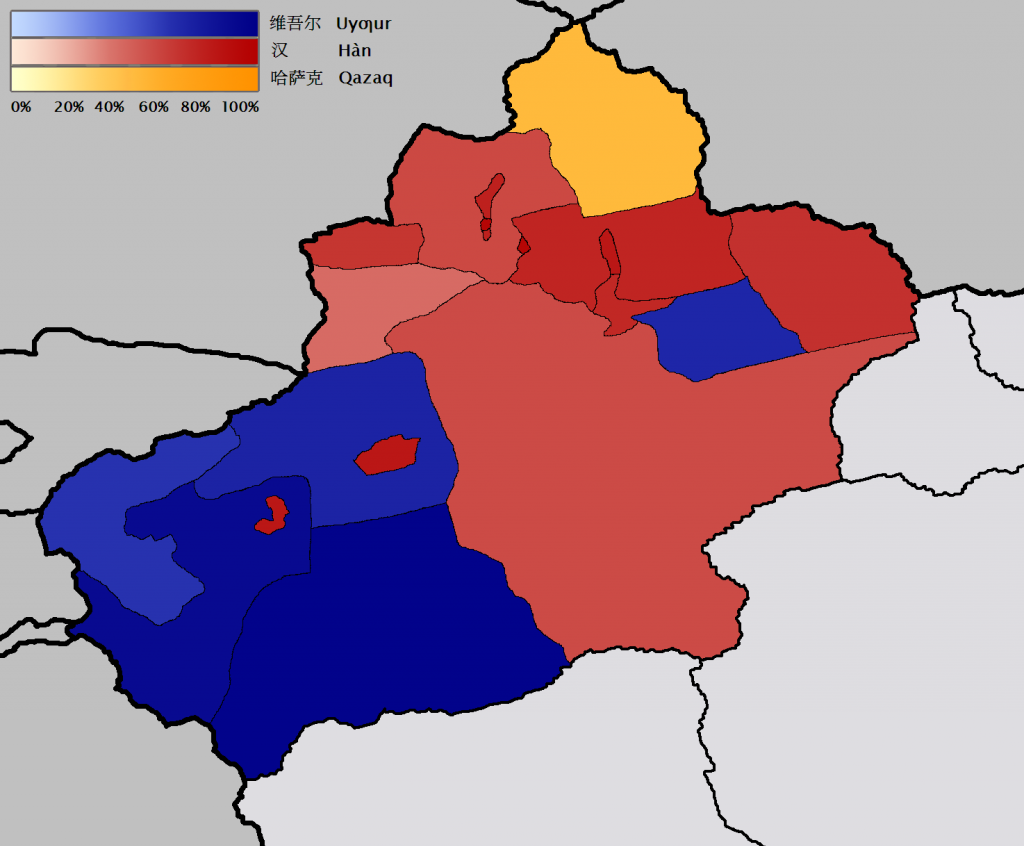 Uyghurs, the most numerous group, make up 43 percent of the population and have the longest history of settlement in the region. They are a Turkic speaking group with a unique mixture of Mediterranean and Asian genetic descent. Although their early history is disputed, mostly for political reasons, some form of Uyghur population has lived in the region for about 4,000 years and have attained and lost power over the region as history dictates. Historically, the southwestern Tarim Basin has been the region these people call home. Uyghurs are almost exclusively dedicated to the Sunni branch of Islam. Since completing their conversion in the 17th century, several famous mosques have been erected.The next largest group consists of the Han people, who make up 40 percent of the population. Han history in the region is almost as complex as that of the Uyghurs; the two are linked by a long chain of violent conflicts. Major Han immigration to the region occurred following the Qing Dynasty’s 18th century conquests, and another large wave in recent years. These people share a common culture with the ethnic Hans who populate most of China. Mostly Buddhist, the Han retain strong economic and family ties with China’s heartland. Since the Qing Dynasty conquests and subsequent waves of immigration, the Han have mostly settled in the northern Dzungarian Basin, with the exception of a few cities in the Tarim Basin.Lastly are the Kazakhs, who inhabit the most northern regions of Xinjiang. Forming approximately eight percent of the population, they are practicing Shi'a Muslims of the Ismaili sect. Significant cultural links between the Xinjiang Kazakhs and their brothers to the north in Kazakhstan make these people an island of eastern Turkic culture. Besides the Kazakhs, the Han, and the Uyghurs, 14 other ethnic populations, such as Tajiks and Russians, also share the land.
Uyghurs, the most numerous group, make up 43 percent of the population and have the longest history of settlement in the region. They are a Turkic speaking group with a unique mixture of Mediterranean and Asian genetic descent. Although their early history is disputed, mostly for political reasons, some form of Uyghur population has lived in the region for about 4,000 years and have attained and lost power over the region as history dictates. Historically, the southwestern Tarim Basin has been the region these people call home. Uyghurs are almost exclusively dedicated to the Sunni branch of Islam. Since completing their conversion in the 17th century, several famous mosques have been erected.The next largest group consists of the Han people, who make up 40 percent of the population. Han history in the region is almost as complex as that of the Uyghurs; the two are linked by a long chain of violent conflicts. Major Han immigration to the region occurred following the Qing Dynasty’s 18th century conquests, and another large wave in recent years. These people share a common culture with the ethnic Hans who populate most of China. Mostly Buddhist, the Han retain strong economic and family ties with China’s heartland. Since the Qing Dynasty conquests and subsequent waves of immigration, the Han have mostly settled in the northern Dzungarian Basin, with the exception of a few cities in the Tarim Basin.Lastly are the Kazakhs, who inhabit the most northern regions of Xinjiang. Forming approximately eight percent of the population, they are practicing Shi'a Muslims of the Ismaili sect. Significant cultural links between the Xinjiang Kazakhs and their brothers to the north in Kazakhstan make these people an island of eastern Turkic culture. Besides the Kazakhs, the Han, and the Uyghurs, 14 other ethnic populations, such as Tajiks and Russians, also share the land.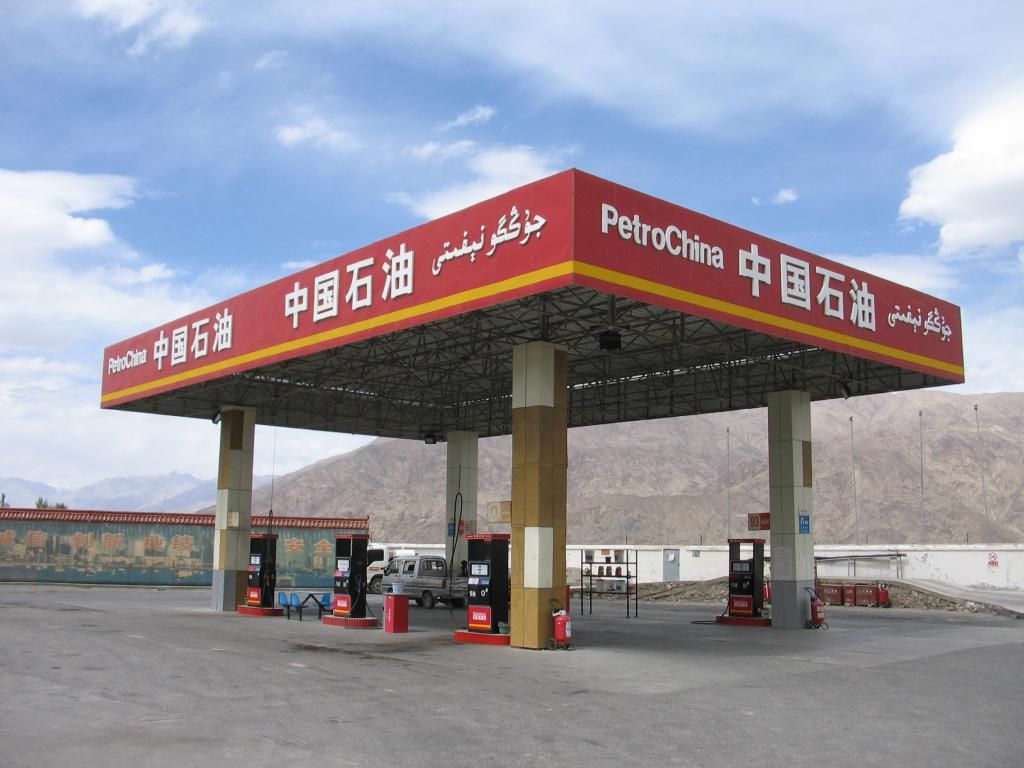 Treasure, Trade and TransportNatural gas extraction in Xinjiang is by far the most dominant feature of the economy and is of crucial importance to Chinese energy security. Over 25 percent of China's natural gas is supplied by Xinjiang via the West-East Gas Pipeline, which spans 4,000 miles and terminates in the metropolis of Shanghai. A volume of 420 billion cubic feet of natural gas passes through this pipeline annually. Such monumental numbers has required the completion of equally titanic engineering projects in the Tarim and Dzungarian natural gas plays. The northern city of Karamay, which means 'black oil' in the Uyghur tongue, is the center of Dzungarian natural gas industry, while Aksu in the Tarim Basin is the southern counterpart. Ethnically, Aksu is split more or less equally between Uyghur and Han populations while Karamay is 80 percent Han.Coal, Xinjiang’s next leading energy export, is of similar importance to natural gas for the region. Over 38 percent of China's estimated coal reserves are deposited in near-surface level banks that make for easy extraction. Although the exploitation of these coal deposits lag behind the natural gas efforts, conservative estimates predict that 800 million tons of coal will be extracted from Xinjiang every year by 2020 C.E. These huge deposits are mostly located in the Dzungarian Basin, but a very large coal bank also exists in the Tarim Basin as well.The natural wealth locked within the ground of Xinjiang includes valuable minerals as well. Iron, salt, beryllium, rare earth metals, and 48 other valuable ores have been discovered and exploited to varying degrees all across the region. Extraction of these minerals has a long history in the region and many current mines have expanded upon earlier exploitations from antiquity. Agriculture is surprisingly productive for such an arid region, thanks to centuries of irrigation projects. Large amounts of grain and fruit are grown in the region for distribution to the rest of China.All of these economic efforts rely upon huge amounts of water, which is naturally the one scarce resource in Xinjiang. Competition for water rights is a divisive issue; local farmers, mining corporations, and neighboring countries all compete for access to the few reservoirs available. To mitigate this issue, neighboring Tibet has been pegged as a possible source of much needed water; several recent engineering projects have been proposed to divert water from the Yarlung Zangbo River of Tibet.Of course, all of these goods must find a route to market. Exports leaving China through Xinjiang total $19.3 billion per year, while imports are approximately $5.9 billion per year. Many of the manufactured items and foodstuffs produced in China must pass through Xinjiang on their way to Eurasian consumers. The same Silk Road routes that generations of merchants used before have now grown to accommodate unprecedented traffic. A vast majority of these goods pass through the city of Horgos, located in the northwest portion of the Dzungarian Basin. A ‘land port’ that abuts Kazakhstan, the Chinese side has been the site of rapid modernization and expansion. Conversely, the Kazakh portion is positively anachronistic; remove the cars and telephone wires and you have a medieval village. Thanks to extensive investment, Horgos has become the most vital transit point for Chinese goods headed to Eurasia and beyond. All of this trade is facilitated by an extensive transportation network. Numerous highways, railways and several large airports have been constructed in a short period of time and many more are planned. As China continues to extensively invest in development of its neighbors economies, the needs of Eurasian consumers can only grow. So too will the roads into and out of China.They Call It PeaceWith this overview of Xinjiang's geography, people, and resources now complete, we are now ready to delve into the Xinjiang conflict armed with knowledge of the greater context forthcoming events will take place in. The strategic location of Xinjiang, its extensive supply of vital natural resources, and its large ethnic Han population sum up to a prize that China simply cannot afford to lose. Necessity, as we will see, compels the Chinese government to retaliate swiftly and brutally to any threat to regional stability. Yet, as the United States has learned, ruthlessness and firepower often create more of the very enemies you hope to eliminate. Up next; diplomacy or jihad, democracy or autocracy, the battle for supremacy amongst secessionist groups pits them against each other almost as much as against China. Plus, clandestine operations and knife wielding maniacs.Cover photo by ColegotaAuthors of additional images linked here, in order of appearance: Muztagh Ata photo by Colegota; Map of Xinjiang's location by TUBS; Map of Xinjiang ethnicities by QuartierLatin1968; Gas Station photo by Otebig
Treasure, Trade and TransportNatural gas extraction in Xinjiang is by far the most dominant feature of the economy and is of crucial importance to Chinese energy security. Over 25 percent of China's natural gas is supplied by Xinjiang via the West-East Gas Pipeline, which spans 4,000 miles and terminates in the metropolis of Shanghai. A volume of 420 billion cubic feet of natural gas passes through this pipeline annually. Such monumental numbers has required the completion of equally titanic engineering projects in the Tarim and Dzungarian natural gas plays. The northern city of Karamay, which means 'black oil' in the Uyghur tongue, is the center of Dzungarian natural gas industry, while Aksu in the Tarim Basin is the southern counterpart. Ethnically, Aksu is split more or less equally between Uyghur and Han populations while Karamay is 80 percent Han.Coal, Xinjiang’s next leading energy export, is of similar importance to natural gas for the region. Over 38 percent of China's estimated coal reserves are deposited in near-surface level banks that make for easy extraction. Although the exploitation of these coal deposits lag behind the natural gas efforts, conservative estimates predict that 800 million tons of coal will be extracted from Xinjiang every year by 2020 C.E. These huge deposits are mostly located in the Dzungarian Basin, but a very large coal bank also exists in the Tarim Basin as well.The natural wealth locked within the ground of Xinjiang includes valuable minerals as well. Iron, salt, beryllium, rare earth metals, and 48 other valuable ores have been discovered and exploited to varying degrees all across the region. Extraction of these minerals has a long history in the region and many current mines have expanded upon earlier exploitations from antiquity. Agriculture is surprisingly productive for such an arid region, thanks to centuries of irrigation projects. Large amounts of grain and fruit are grown in the region for distribution to the rest of China.All of these economic efforts rely upon huge amounts of water, which is naturally the one scarce resource in Xinjiang. Competition for water rights is a divisive issue; local farmers, mining corporations, and neighboring countries all compete for access to the few reservoirs available. To mitigate this issue, neighboring Tibet has been pegged as a possible source of much needed water; several recent engineering projects have been proposed to divert water from the Yarlung Zangbo River of Tibet.Of course, all of these goods must find a route to market. Exports leaving China through Xinjiang total $19.3 billion per year, while imports are approximately $5.9 billion per year. Many of the manufactured items and foodstuffs produced in China must pass through Xinjiang on their way to Eurasian consumers. The same Silk Road routes that generations of merchants used before have now grown to accommodate unprecedented traffic. A vast majority of these goods pass through the city of Horgos, located in the northwest portion of the Dzungarian Basin. A ‘land port’ that abuts Kazakhstan, the Chinese side has been the site of rapid modernization and expansion. Conversely, the Kazakh portion is positively anachronistic; remove the cars and telephone wires and you have a medieval village. Thanks to extensive investment, Horgos has become the most vital transit point for Chinese goods headed to Eurasia and beyond. All of this trade is facilitated by an extensive transportation network. Numerous highways, railways and several large airports have been constructed in a short period of time and many more are planned. As China continues to extensively invest in development of its neighbors economies, the needs of Eurasian consumers can only grow. So too will the roads into and out of China.They Call It PeaceWith this overview of Xinjiang's geography, people, and resources now complete, we are now ready to delve into the Xinjiang conflict armed with knowledge of the greater context forthcoming events will take place in. The strategic location of Xinjiang, its extensive supply of vital natural resources, and its large ethnic Han population sum up to a prize that China simply cannot afford to lose. Necessity, as we will see, compels the Chinese government to retaliate swiftly and brutally to any threat to regional stability. Yet, as the United States has learned, ruthlessness and firepower often create more of the very enemies you hope to eliminate. Up next; diplomacy or jihad, democracy or autocracy, the battle for supremacy amongst secessionist groups pits them against each other almost as much as against China. Plus, clandestine operations and knife wielding maniacs.Cover photo by ColegotaAuthors of additional images linked here, in order of appearance: Muztagh Ata photo by Colegota; Map of Xinjiang's location by TUBS; Map of Xinjiang ethnicities by QuartierLatin1968; Gas Station photo by Otebig
